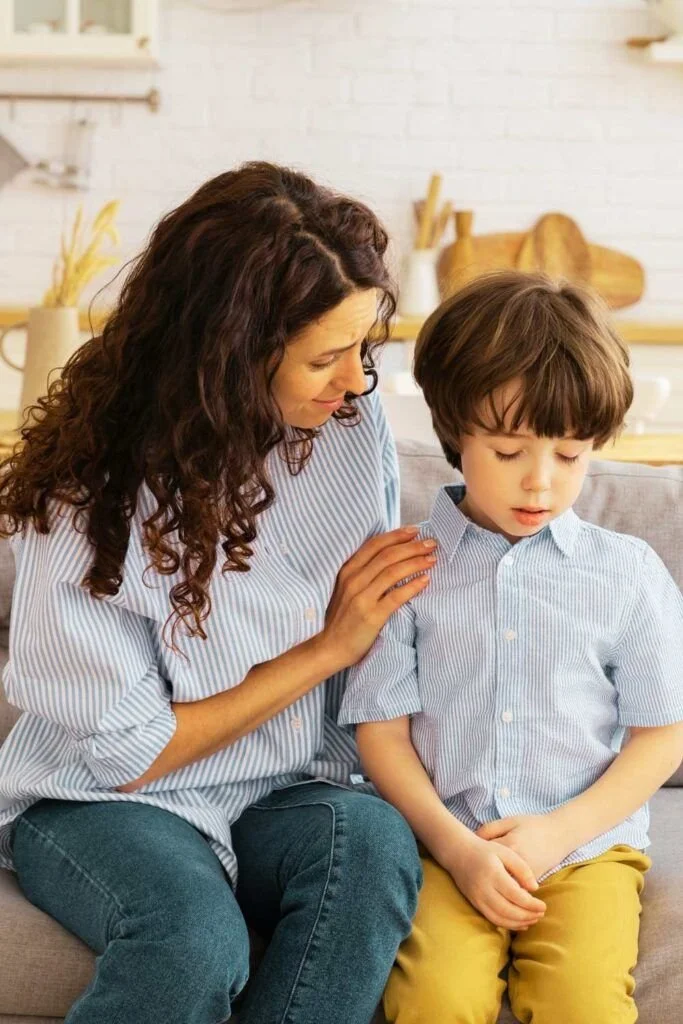Positive Discipline: Teaching Accountability Without Shame
Discipline doesn’t have to mean punishment. It doesn’t have to include yelling, threats, or guilt trips. In fact, when done with empathy and intention, discipline becomes something far more powerful: a way to teach accountability while preserving connection and self-worth.
Positive discipline is about guiding rather than punishing. It helps children learn from their mistakes instead of fearing them. And most importantly, it allows parents to correct behavior without damaging a child’s sense of self.
Why Traditional Discipline Falls Short
For generations, discipline often meant consequences rooted in fear—timeouts, grounding, or worse. While these tactics might stop unwanted behavior in the moment, they rarely lead to lasting understanding.
Shame-based discipline sounds like:
“What’s wrong with you?”
“You’re so selfish.”
“I’m disappointed in you.”
It might change behavior—but at a cost. Kids may internalize these messages and learn to hide their mistakes rather than take responsibility for them.
Accountability can’t grow in shame. But it thrives in safety.
What Is Positive Discipline?
Positive discipline is a framework that blends firmness with kindness. It’s respectful, non-punitive, and based on the idea that behavior is learned—and so is emotional regulation.
Instead of “making kids obey,” it focuses on:
Understanding the root of the behavior
Teaching skills and self-regulation
Holding kids accountable in developmentally appropriate ways
Maintaining a secure, connected relationship
In short, it’s discipline that builds skills, not fear.
Accountability Without Shame? Yes, It’s Possible.
You can teach kids to take ownership without crushing their spirit. Here’s how:
1. Correct the Behavior, Not the Person
When a child makes a mistake, address the action, not their identity.
Instead of: “You’re so rude.”
Try: “I noticed you interrupted your sister. Can we practice waiting our turn?”
This approach keeps the focus on what needs to change rather than labeling the child as “bad.”
2. Stay Calm and Connected
When emotions run high, connection is the first thing to go. But kids can’t learn when they feel threatened.
Speak in a low, steady tone. Make eye contact at their level. Even during conflict, show that your relationship is safe. It sends the message: I’m here. I’m guiding you—not punishing you.
3. Use Natural and Logical Consequences
Instead of arbitrary punishments, let consequences connect directly to the behavior.
For example:
A toy gets misused? It’s put away for a while.
Homework wasn’t done? That means less time for a screen break.
Hurt someone’s feelings? Apologizing or making amends is part of the repair.
This helps kids understand the cause and effect of their actions without shame.
4. Name the Emotion Beneath the Behavior
Often, misbehavior stems from an unmet need or overwhelming feeling. Helping kids recognize it builds self-awareness and trust.
Say things like:
“Looks like you were feeling frustrated.”
“It’s okay to be mad, but it’s not okay to hit.”
“Can we figure out a better way next time?”
When kids feel understood, they become more open to reflection and repair.
5. Invite Reflection
You don’t have to do all the talking. Ask guiding questions that help kids process and problem-solve.
Try:
“What happened there?”
“How do you think your friend felt?”
“What could you try next time?”
“What do you think would help make this right?”
This builds ownership without blame, and equips kids with tools for the future.
What Kids Learn From Positive Discipline
They don’t just “behave”—they build emotional intelligence. They learn that:
Mistakes are part of learning
Feelings can be managed, not feared
Conflict can be repaired
Accountability and self-worth can coexist
Over time, kids become more self-aware, empathetic, and confident in navigating tough moments.
Common Misconceptions
“But aren’t you letting them get away with it?” Not at all. Positive discipline is clear about limits and expectations. It simply avoids control tactics that harm trust.
“What if they just laugh it off or ignore me?” It’s okay if accountability doesn’t sink in right away. Discipline is a process—not a single moment. Consistency and connection are key.
“Isn’t life full of tough consequences? Shouldn’t kids learn early?” Yes—but learning through love builds resilience. Kids who are guided with respect become adults who make ethical, empowered choices.
Tips for Making the Shift
Practice your self-regulation first. If you’re calm, they’ll follow.
Use mistakes as teaching moments.
Model accountability by owning your missteps.
Keep limits firm—but deliver them kindly.
Repair after conflict. A hug, an apology, or a moment of reconnection goes a long way.
Final Thoughts
Positive discipline isn’t about being permissive. It’s about being purposeful. It replaces shame with curiosity, punishment with teaching, and fear with respect.
When kids are corrected without being made to feel wrong, they grow into adults who know how to take responsibility without carrying the weight of unworthiness.
So the next time your child spills the milk, talks back, or tests a boundary, pause. Breathe. And remember: the goal is not just to correct the behavior—it’s to protect the relationship while doing so.
Because accountability is taught with love? That’s the kind that truly lasts.

